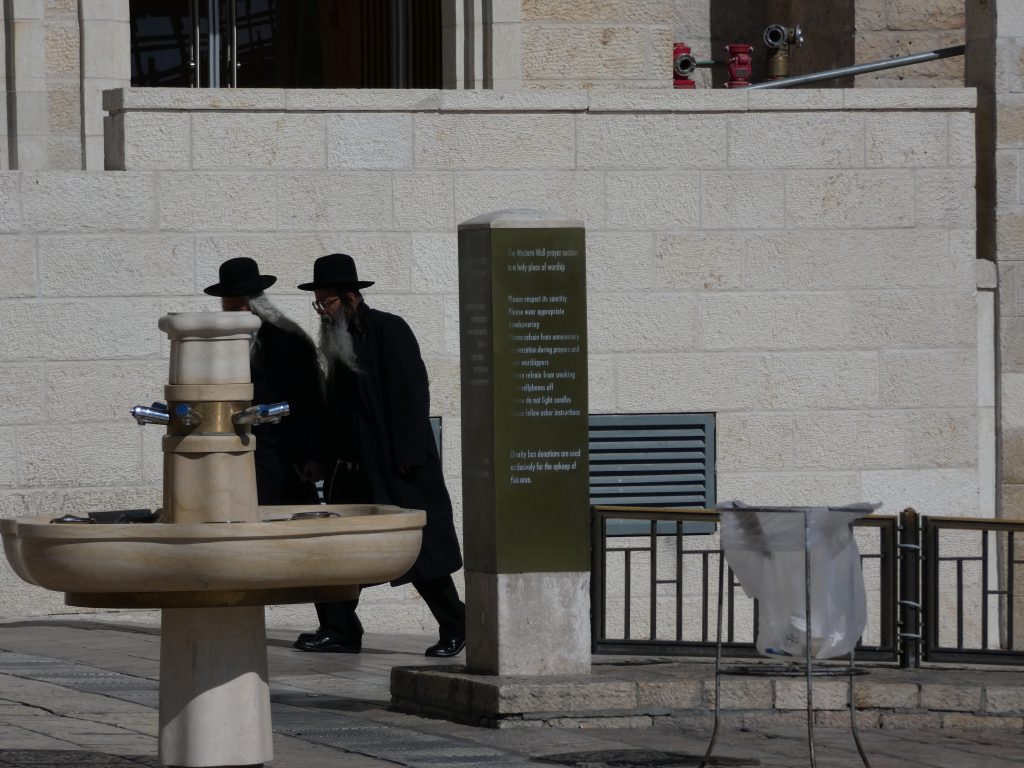
Approaching the Western Wall in Jerusalem, the courtyard is bustling with men wearing traditional white prayer tallit (shawls) and kippah (skull cap). A group of men pass by adorned in the customary black Hasidic dress and hats while young men also wore head tefillah. Clearly, I knew that I was in a place of reverence, the holiest of all Jewish sites.
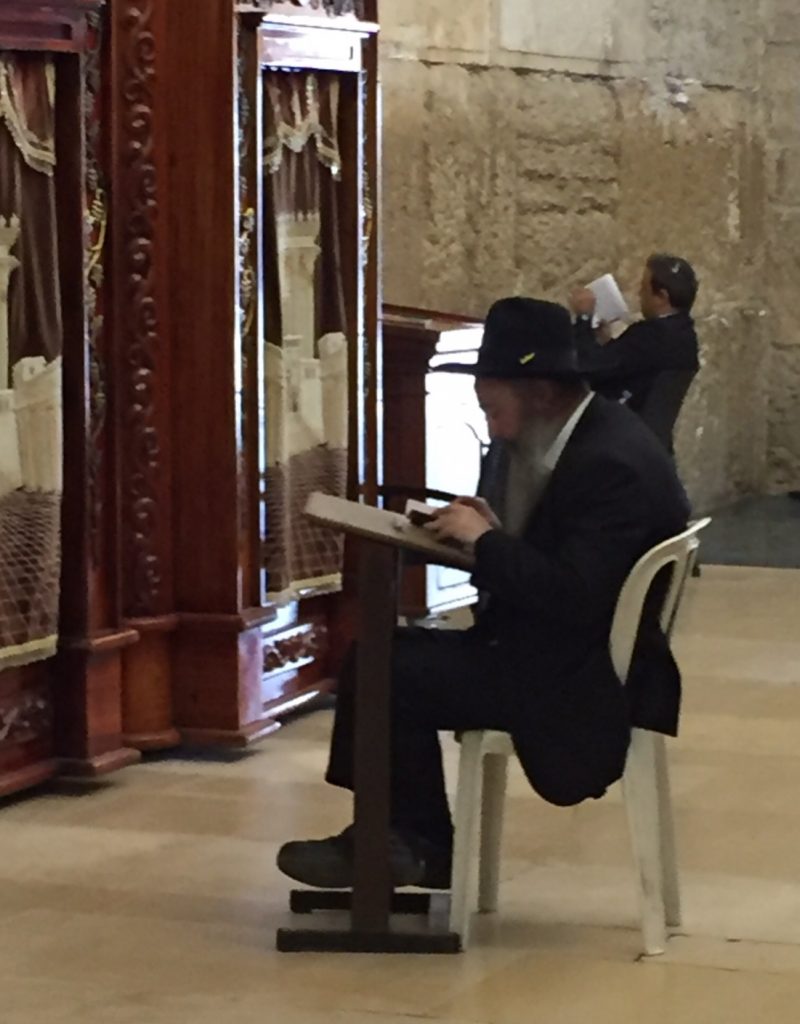
Although I was modestly dressed, I felt awkward in a pair of khakis, long-sleeved blouse and head scarf, appropriate for my visit to the remains of the Jews’ great temple. I had arrived through the entrance to find that the Wall is divided to allow the men to pray on the left side near Wilson’s Arch, while the women congregate towards the right. The men’s section also includes the Western Wall Tunnel, which contains additional room for prayers as well as a wide range of study resources.
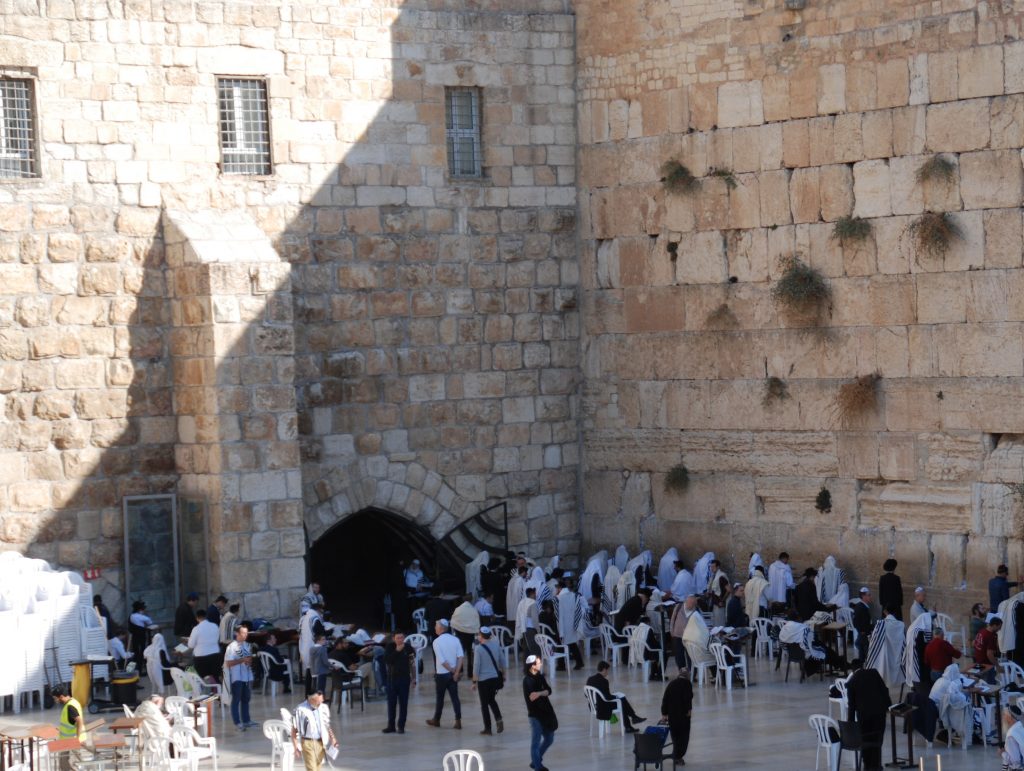
The Western Wall is considered holy because of its connection to King Herod’s building of the Jews’ Second Temple. This retaining wall, located on the western side of the structure, was built by Herod to protect the Temple Mount and is now under the control of the Muslim religion. It is the Temple Mount where the God of Israel resided in the Holy of Holies, built to hold the Ark of the Covenant.
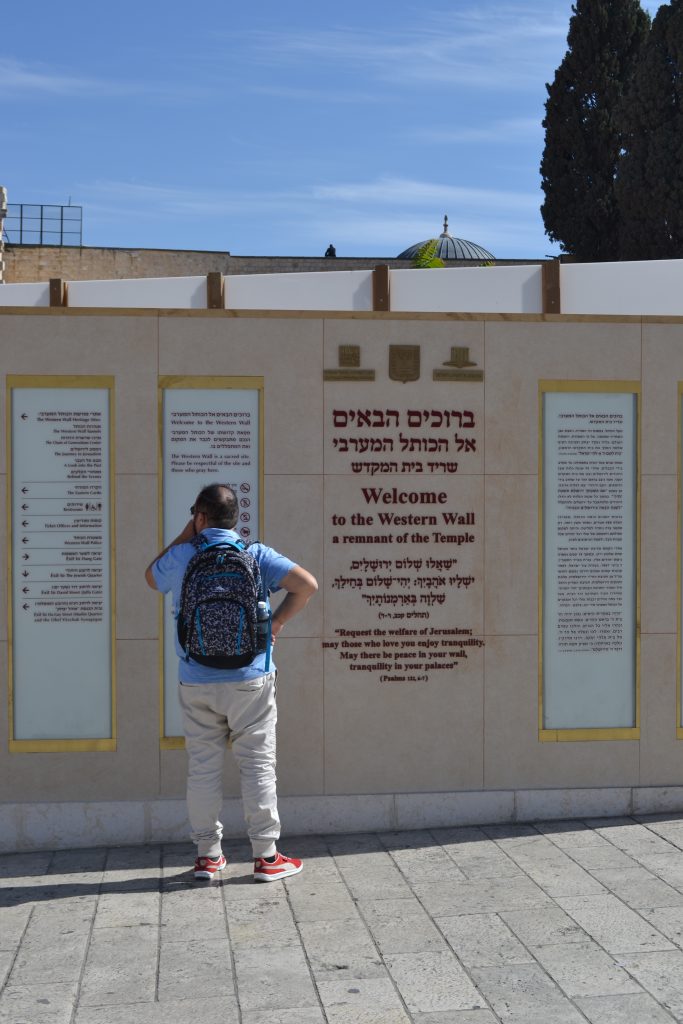
Built of ancient limestone and located in the Old City of Jerusalem, the Western Wall is also referred to as the Wailing Wall due to the number of Jews that that visit this site to weep over the destruction of the Second Temple. Each year, they commemorate the loss of their temple by attending the Tisha Be-Av, a day of mourning for their loss.
Over the years, the Jews were banned from this site until the Six Day War in 1967 when they regained control of the Western Wall. It was an emotional time for the Jews who had long awaited this day. The swore to “never again relinquish this wall.” (Brigadier Rabbi Shiomo Goren).
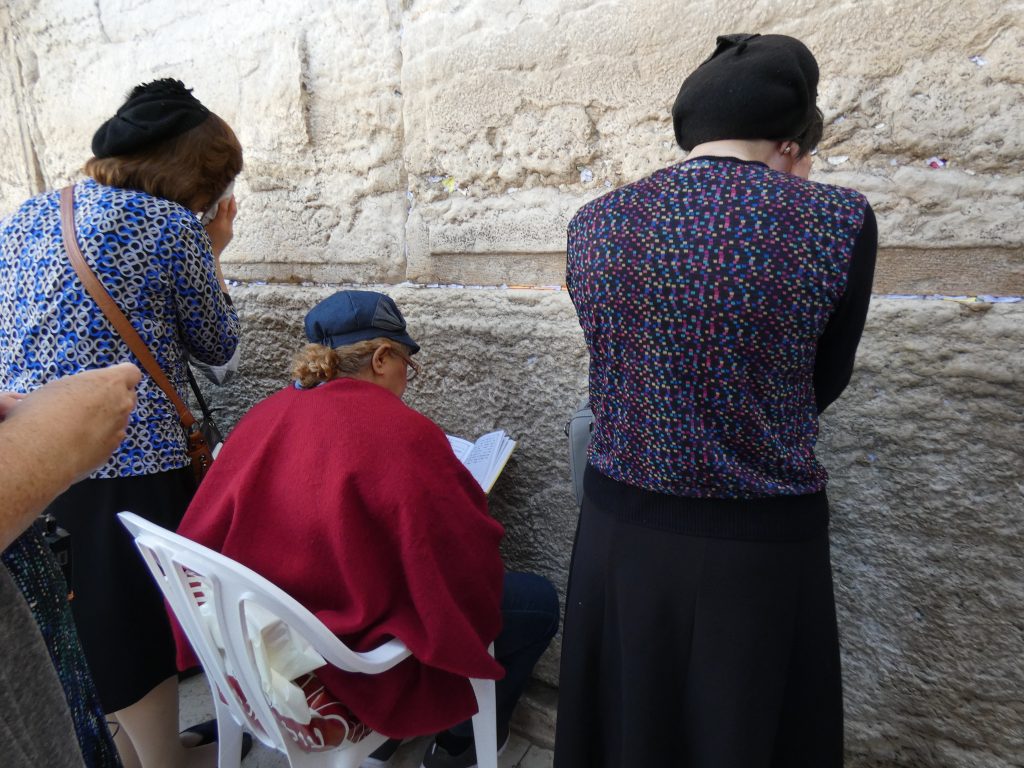
The Western Wall drew over 3.6 million tourists in 2017. Visitors write prayers on small strips of paper and put them into the rocks of the Wall. The Jews continue the tradition of the ceremonial reading of the Torah each week, yearning for the coming Messiah and the fulfillment of prophecy. Bar Mitzvah ceremonies take place here as well as the swearing in of Israeli soldiers. Today the Western Wall is a major center of pilgrimage from a variety of faiths and continues to attract visitors from all over the world. I left my prayer in the wall and felt the world lifted from my shoulders.
What to See and What to Do:
The Western Wall
Located in Old Jerusalem in Israel below the Temple Mount
- Admission Fee: There is no admission fee to visit the Western Wall.
- Hours: Open daily; the Western Wall never closes and is open regardless of the weather
- Scenic View: The view of the Sea of Galilee and the famous mosaic of the fish and the loaves
- Length of Visit: 1 hour
- Travel Tip: The Western Wall may be crowded on Jewish holidays and festivities. Visitors must dress modestly covering knees and shoulders for women, while men are required to wear head coverings or yarmulkes which are available for free. During the Jewish Sabbath (sundown Friday to sundown Saturday), no smoking nor photography is permitted. This also includes Jewish holidays. Visitors must make reservations for tunnel tours.
Where to Stay:
The Olive Tree Hotel, Royal Plaza Jerusalem
23 St. George Street
Jerusalem, Israel
Telephone: 972 2 5410410
Where to Eat:
The Olive Tree Hotel, Royal Plaza Jerusalem
23 St. George Street
Jerusalem, Israel
Telephone: 972 2 5410410
The Olive Tree Hotel has an amazing buffet provided for dinner with a well-rounded offering of Israeli dishes and world-wide cuisine.